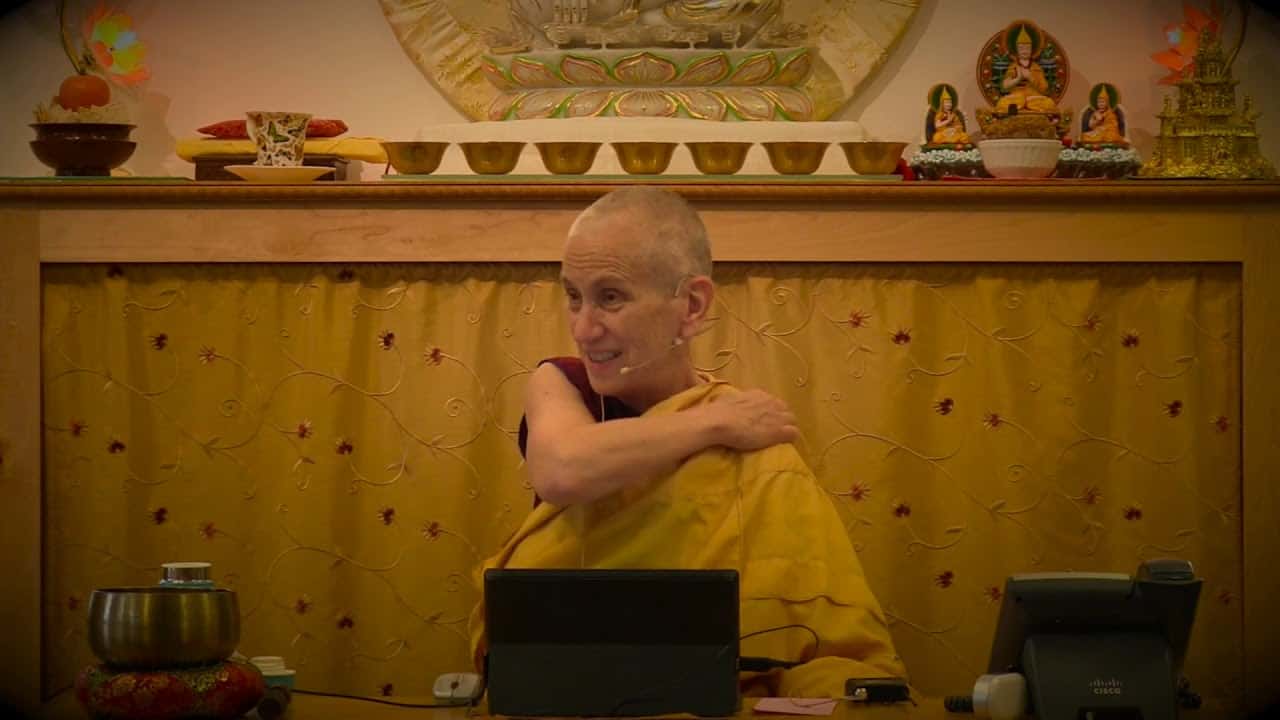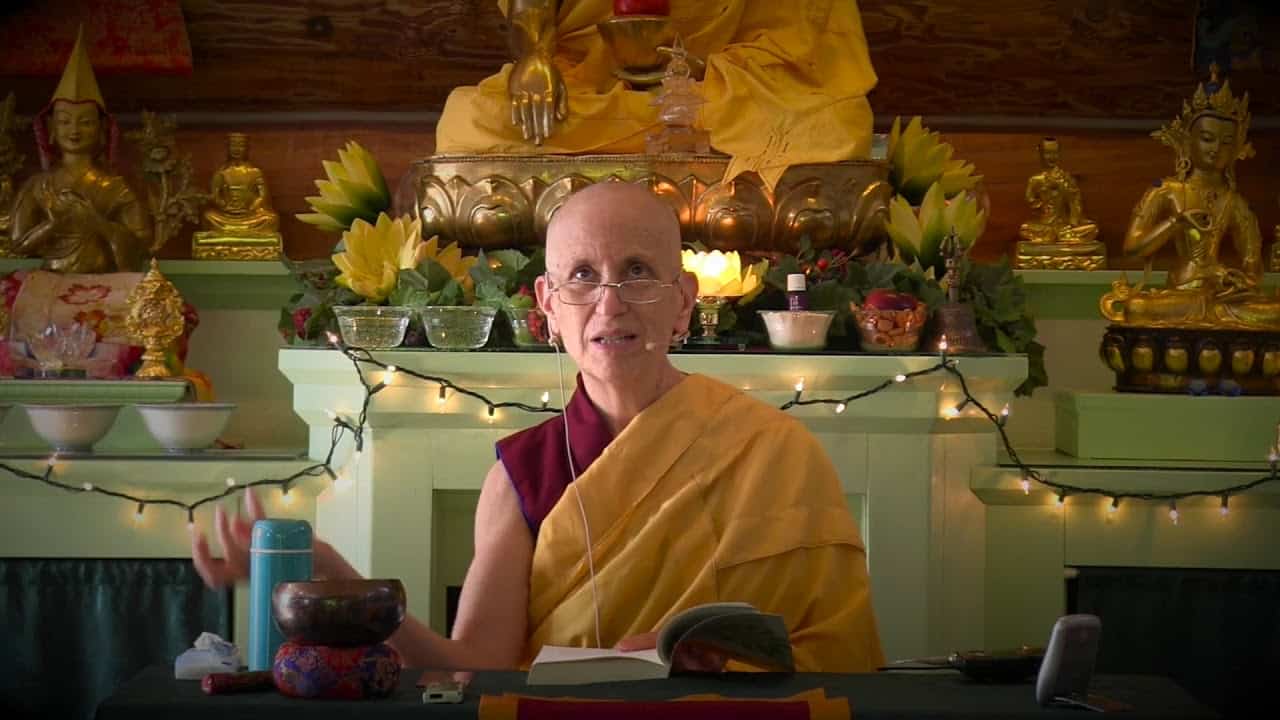The perfection of fortitude
The text turns to training the mind on the stages of the path of advanced level practitioners. Part of a series of teachings on the Gomchen Lamrim by Gomchen Ngawang Drakpa. Visit Gomchen Lamrim Study Guide for a full list of contemplation points for the series.
- How the internet provides new ways to covet and generate malice
- The role of science and technology in promoting wrong views
- The fortitude of developing inner strength
- A discussion on forgiving and apologizing
- Accepting reality and taking responsibility for our thoughts
Gomchen Lamrim 105: The Perfection of Fortitude (download)
Contemplation points
Modern non-virtuous pathways of mind
- Some modern forms of covetousness might include allowing ourselves to be inundated with ads through the mail, internet, billboards, etc (even for Dharma events), shopping/the need to buy/the mind that wants more and better (everything is so accessible these days), the resume-building culture (coveting status or opportunities), constantly planing for sales, coveting fame (desiring “likes” on social media), planning the next, most exotic vacation, etc. Spend some time thinking about each of these, if and why it is considered covetousness (which is a mental action) according to the lamrim, whether it is a complete karma, etc. Are there others not mentioned in the teaching that apply?
- Some modern forms of malice might include ruminating about modern politics, righteous anger, ruminating about shaming/trolling on-line, generating malice towards characters in movies/on tv/in games, thoughts evoked when listening to particular types of music, etc. Spend some time thinking about each of these, if and why it is considered malice (remember, this is a mental action, though it can lead to physical and verbal actions) according to the lamrim, whether it is a complete karma, etc. Are there others not mentioned in the teaching that apply?
- Some modern forms of wrong views might include how wrong views are proliferated via modern technology, how fake news/propaganda encourages wrong views, materialist view (there is nothing after death), jihadi websites, etc. Spend some time thinking about each of these, if and why it is considered wrong views according to the lamrim, whether it is a complete karma, etc. Are there others not mentioned in the teaching that apply?
- More aware of how non-virtue is practiced in our modern society and in your own life, resolve to abandon negativity.
Fortitude
- Venerable Chodron said she uses the word fortitude because it doesn’t imply the same passive tone as patience. Fortitude is active. It’s internal strength. Think about this definition. How have you seen fortitude operate in your own life? In the world? What makes fortitude a virtue?
- The first type of fortitude is fortitude when we’re angry. Why is it important to have internal strength when we’re overwhelmed by anger? Venerable Chodron said often, we have trouble even identifying our own anger because we’re so wrapped up in what the other person did. What can you do to better identify your own anger so that you can work with your experience?
- The second type of fortitude is the fortitude of bearing harm from others. It’s more than just buckling down and bearing others’ abuse, though. It’s actually processing our experience in a very different way. What tools does the Dharma give us to begin processing our experience in a way that is healthy? How does this enhance internal strength/fortitude?
- Resolve to cultivate internal strength in your life by being mindful of your own anger and applying the appropriate antidotes. Start with small experiences of upset, disappointment, etc. Be sure to rejoice each time you recognize fortitude in your life or in the world around you.
Venerable Thubten Chodron
Venerable Chodron emphasizes the practical application of Buddha’s teachings in our daily lives and is especially skilled at explaining them in ways easily understood and practiced by Westerners. She is well known for her warm, humorous, and lucid teachings. She was ordained as a Buddhist nun in 1977 by Kyabje Ling Rinpoche in Dharamsala, India, and in 1986 she received bhikshuni (full) ordination in Taiwan. Read her full bio.


